A Private Tour today in North Norfolk. After a very wet and windy day yesterday, we were very fortunate that it was another glorious bright and sunny morning with blue skies today, much better than had been forecast. It did cloud over a bit in the afternoon, but there were still some sunny intervals and with light winds, it was very mild, until the sun started to go down.
Our first destination for the morning was Holkham. We could see a number of ducks on the pools by Lady Anne’s Drive as we drove up, so we walked back for a look after we parked. There were plenty of Wigeon feeding out on the grass, although there are hopefully still a lot more to come over the coming weeks, plus a few Teal and Mallard around the pools an ditches.
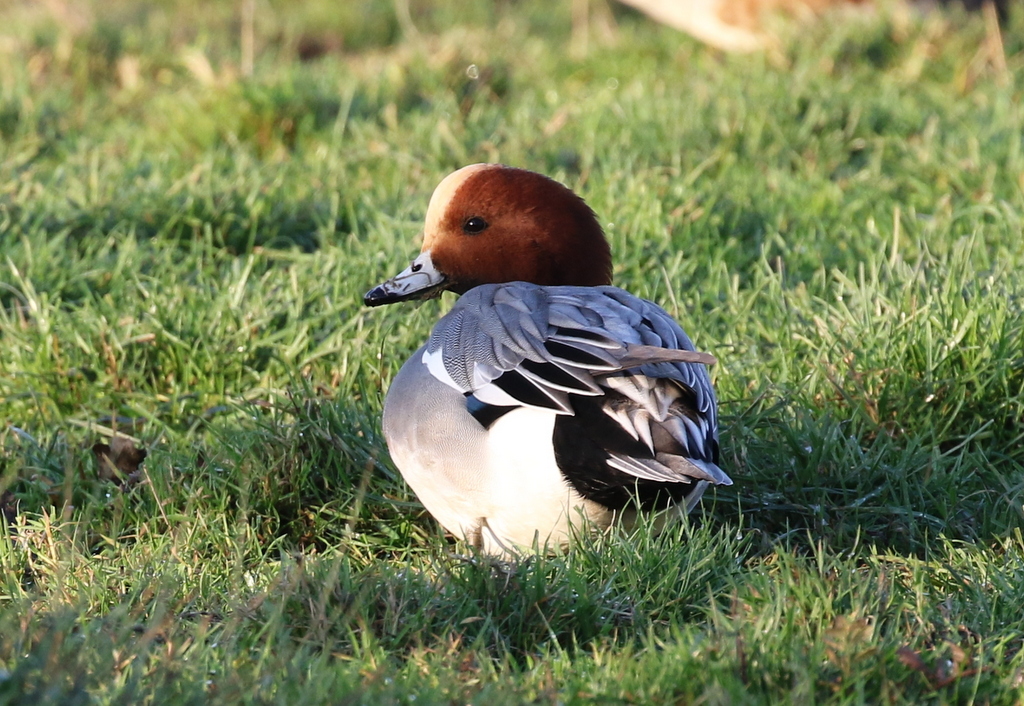
Two Common Buzzards were perched on the bushes in the distance out across the grazing marsh, one quite dark and the other strikingly pale. The latter really stood out, shining white below in the morning sunshine. A rather dark juvenile Marsh Harrier was quartering the marshes, flushing the ducks further back. A Grey Heron was lurking in front of the reeds on the edge of one of the ditches.
Several small skeins of Pink-footed Geese flew off from the field on the other side of the road, but we got the scope on the small group which remained down on the grass. We could see their dark heads and delicate dark bills with a pink band around. Across the drive, the bigger and paler Greylags were sporting large orange carrots for bills. A couple of Egyptian Geese were out on the grazing marshes too.
As we walked up towards the pines, we stopped to scan the bushes along the ditch to the west. There are still lots of berries here and we quickly spotted a couple of Blackbirds taking advantage of the food to refuel, and a Redwing which perched up nicely so we could get it in the scope. There are still thrushes arriving from the continent for the winter at the moment.
When we got out onto the open saltmarsh north of the trees, we looked across to see a flock of Brent Geese feeding, well hidden in the vegetation across the other side of the path out to the beach. One of them was darker than the others, with a slightly more obvious white flank patch and bolder white collar. This is a regular returning Black Brant hybrid which comes back here each year with the Brents.
The rest of the saltmarsh was rather quiet, as we walked east, but as we got to the new cordon we could see Shorelarks in the distance. They were feeding on the edge of the beach beyond the fence, so we had a quick look at them through the scope from here in case they were disturbed. There have been around 12 Shorelarks here for the past week or so, and we counted the same number this morning.
We walked up a little further, to the end of the cordon, where another birder was already standing watching them. As we got to him, another small group of 9 more Shorelarks flew in, and landed on the sand just in front of us. We could see 21 now, the highest count of winter here so far. Hopefully the number of birds here for the winter might continue to grow yet. We had a great look at them through scope, picking around the small seedheads on the beach. With the low winter sun behind us, it was lovely light and the Shorelarks’ yellow faces shone as they turned to face us.
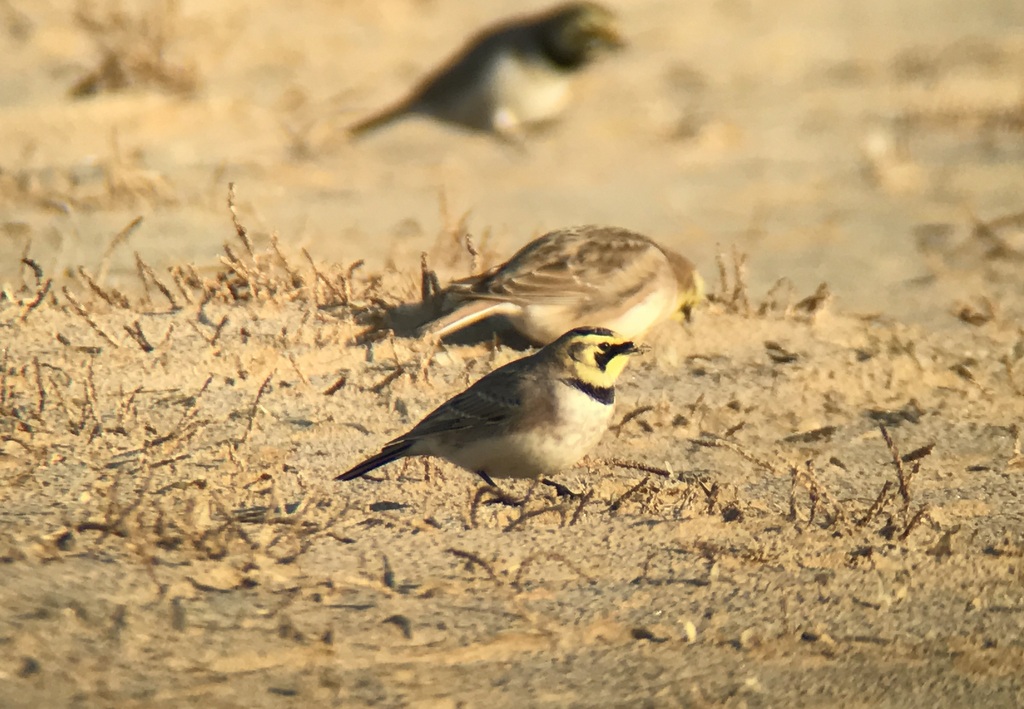
For no apparent reason, the Shorelarks suddenly took off and flew out over the dunes towards the beach. We looked across through the low gap and noticed a flock of small birds fly up around the corner of dunes, but rather than being the Shorelarks it was a flock of Snow Buntings.
We walked up to the beach, hoping to get a better look at the Snow Buntings. We could see them feeding on the edge of the dunes, but we could see a walker approaching with a couple of loose dogs and needless to say the Snow Buntings flew before we could get into position and disappeared off round the dunes. The Shorelarks did reappear though, flying in again from the beach and landed back behind us.
The tide was out and as it was not so busy today there were lots of birds down at the bottom of the beach, by the sea. As well as all the gulls, a line of Cormorants were drying their wings out on the sandbar. There were lots of Oystercatchers too, and several Sanderlings running up and down the shoreline.
A smart drake Red-breasted Merganser in the channel in front of the sandbar was close enough to get a good look at it through the scope, but a small flock of Common Scoter was a bit further out and the line of Common Eider was very distant, the white drakes standing out as they caught the sunlight. A diver busy preening some way off to the west proved to be a Great Northern Diver when it stopped long enough for us to get a proper look at it. Otherwise, there were a few Great Crested Grebes offshore and one or two Gannets drifting back and forth.
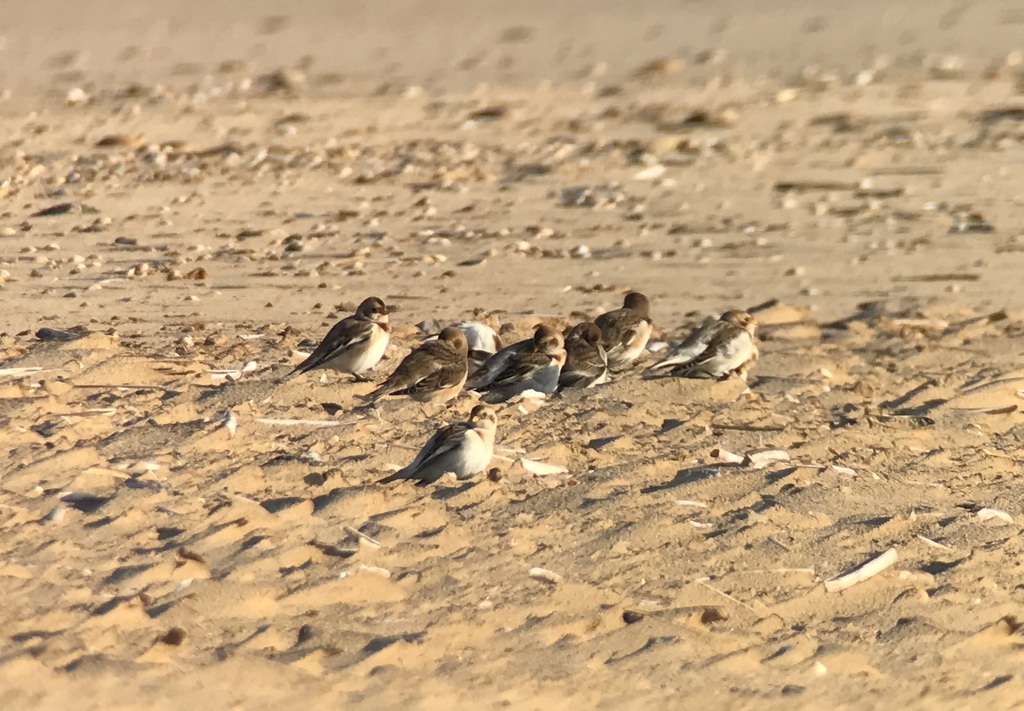
They hadn’t reappeared where they had been feeding, so we set off along the beach towards Wells to see if we could find the Snow Buntings again. When we got round the corner and scanned the sand, we could see them out on the open beach in a small group, fifteen of them, busy preening in the sunshine. We had a nice look through the scope, before they were flushed by another dog walker, and flew to the edge of the dunes. The Snow Buntings seemed to be settled here, so we walked up slowly and had a closer look at them, running in and out of the tufts of marram grass, picking at the small seedheads growing out of the sand.
As we made our way back towards the car, the Shorelarks were still showing well on the edge of the cordon, so we stopped for another look. They seemed to have picked up a friend as they were flying round, and there were now 22 of them. Watching one of them close up through the scope we could even see the small ‘horns’ from which it gets its alternative name of Horned Lark.
When we got back to Lady Anne’s Drive, disaster struck. As we drove back towards the main road, we realised we had a puncture. We couldn’t get the wheel off here, so over a coffee back in The Lookout, we tried to get someone to come out to help. No one locally could come out and fix it on site, so we were faced with a long wait for a tow, which would ruin the rest of the day. It was time for plan ‘B’!
While we waited for someone to pick us up, we went for a quick walk west along the track on the inland side of the pines. Several Jays flew in and out of the trees ahead of and a Common Buzzard dropped out of the pines and flew off across the track.
We hadn’t gone too far before we came across a tit flock. First the Long-tailed Tits came out of the trees, followed by several Blue Tits and Coal Tits. A Goldcrest showed well low in a pine tree by the path. Eventually a Treecreeper followed behind the flock, and stopped to feed along a horizontal branch sticking out high above us in the pines. A Great Spotted Woodpecker called from deep in the trees..
We got back to the abandoned car just in time to meet our lift to Wells, where we picked up alternative transport for the afternoon. We then drove down to Wells Woods, where we had a quick break for a bite to eat. A Chiffchaff was calling from the edge of caravan park, just beyond the car park. After lunch, we headed in for a quick look in the woods.
The boating lake provided a couple of additions to the day’s list. Several Little Grebes were diving out in the middle, and a couple of Gadwall were sleeping along the edge with the Mallards and Mute Swans.
Small numbers of migrant thrushes were in evidence here too, as they had been at Holkham earlier. Along the main track, one or two Blackbirds were coming to bathe in the puddles, and were joined by two Redwings. Just past there, we flushed more Blackbirds and Redwings from the hawthorn bushes where they had been feeding on the berries. A Fieldfare flew up too and landed in a birch tree where it tried to hide in amongst the leaves.

The birch trees around the Dell meadow were quiet. We had hoped to find the redpoll flock here today, but they have been very elusive and are clearly spending a lot of time elsewhere. There was no sign of them in the birches by the toilet block either, and we met another couple of birders who had walked back all the way from Lady Anne’s Drive without finding them.
We looped back round via the Dell and found a tit flock working its way through the trees. A Chiffchaff called and we found it flitting around in the birches with the other birds. We had great views of a Goldcrest too, fluttering around the branches just above our heads. A Mistle Thrush flew across the tops of the pines.
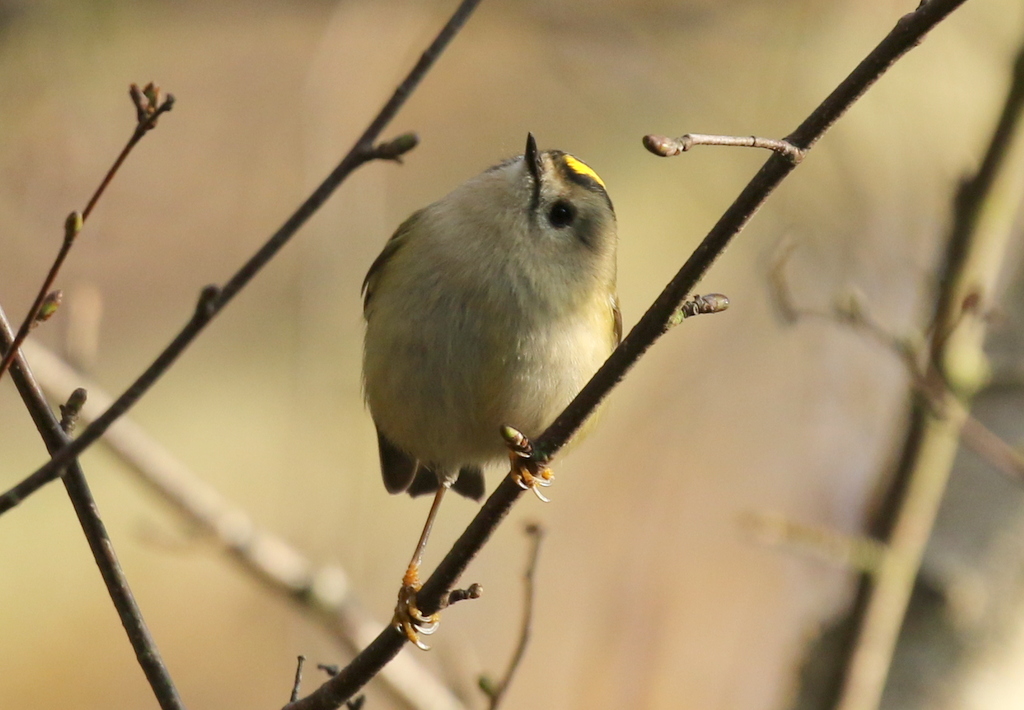
We heard one or two lone redpolls flying overhead, but there was still no sign of the large flock. As we made our way back round on the main path, we stopped to look at a male Chaffinch feeding on apples in a tree. A Bullfinch called and flew up into the top of a hawthorn just behind, a smart male. It perched there for several minutes, mostly back on to us, showing off its white rump, flashing pink underneath as it turned, before it was flushed by a passing dogwalker.
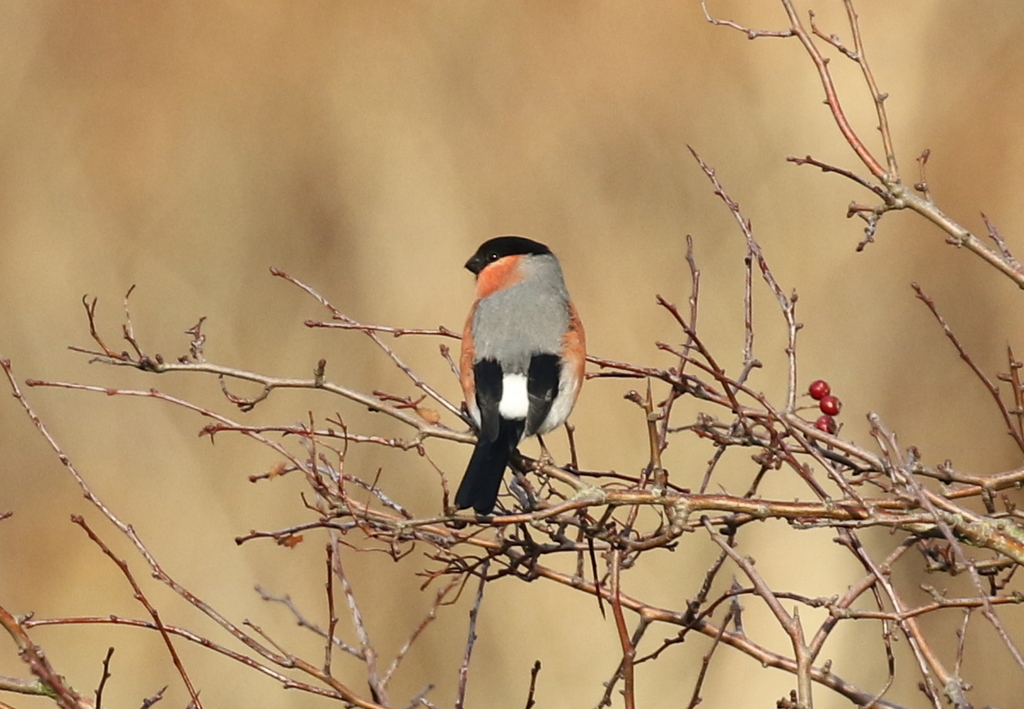
As we passed the boating lake, we could see a flock of birds circling round over the trees way off in the distance beyond the end of the water. The redpolls. We watched for a couple of minutes as they repeatedly flew round and then settled back down into the trees to feed. Unfortunately, they were in the private caravan site, and there is no access here. At least we know where they are now!
After Wells Woods, we headed along the coast to Blakeney. As we got out of the car in the car park by the harbour, we could see a strange looking gull on the sand just across the channel. It was too dark above for a Herring Gull, but not dark enough for a Lesser Black-backed Gull, with rather odd-coloured fleshy yellowish legs, neither pink nor properly yellow. It is a hybrid, probably Herring x Lesser Black-backed Gull, and returns here each winter. A Common Gull in with the Black-headed Gulls bathing further along the channel was a lot less confusing!
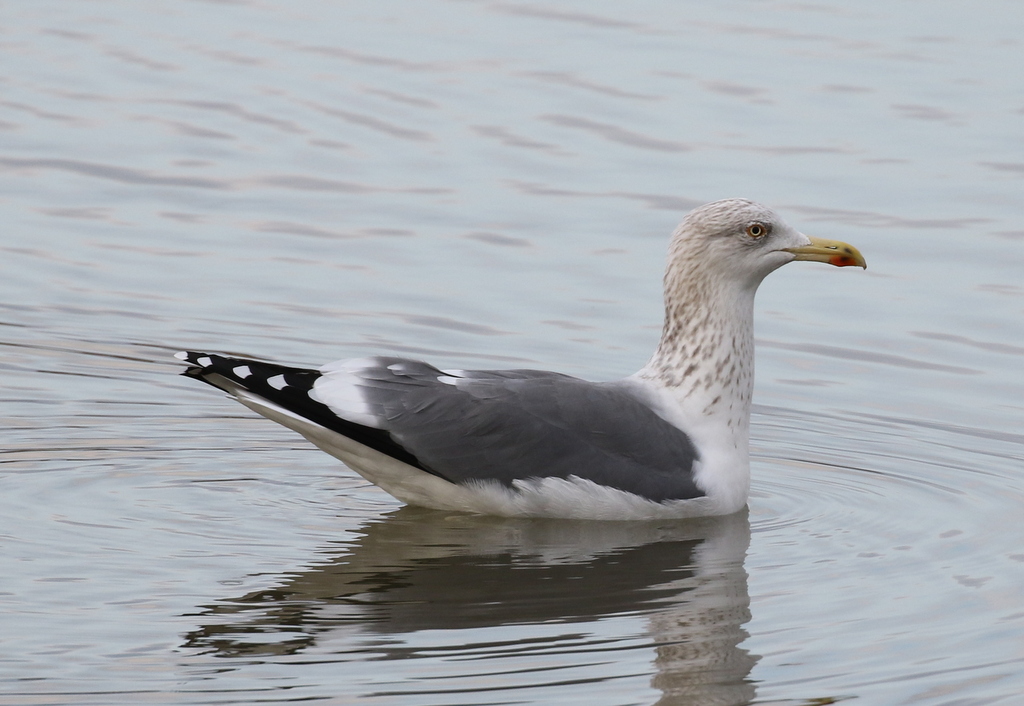
The ducks in the wildfowl collection don’t count, but we had a quick look at some of the exotics. A Stock Dove looking for some spare duck food on the bank with the Jackdaws was a nice bonus.
As we walked out along the seawall, a female Stonechat was feeding out in the middle of one of the recently cut meadows. A couple of Marsh Harriers were circling distantly over the reedbed out in the middle. A Kestrel perched on a post out on the saltmarsh was doing its best impression of a Merlin.
Several lines of Pink-footed Geese came up from the grazing marshes and headed off inland, calling. A small group of chattering Brent Geese flew around at the same time, before heading out over the bank past us, towards the saltmarsh. The sun was already starting to go down and shining between the clouds, giving us some lovely late afternoon light to illuminate the geese.

Looking out across the Glaven Channel from the corner of the seawall, a Short-eared Owl appeared above the shingle ridge beyond. It had probably just been flushed by a Marsh Harrier, as the two of them circled together for a second. We got the Short-eared Owl in the scope and could see it flying with a distinctive stiff-winged rowing action, before it dropped back down to the bushes on the edge of the shingle.
We turned our attention to the waders out on the mud in the harbour. There were lots of Dunlin scurrying about in big groups. Scattered in with them were several Grey Plover, Redshank and Curlew. Further over, we could see lots of Oystercatchers too.
A Hen Harrier appeared, a ringtail, flying low over the saltmarsh just beyond the mud. We could see the white square at the base of its tail. It worked its way quickly west past us, then turned in across the harbour and came over to work the saltmarsh to the west of us, presumably having a last hunt before heading in to roost. Further out, across the saltmarsh, we picked up a Merlin very distantly chasing after two Carrion Crows and getting chased in return.

There was no sign of the Twite which often come in to drink at the pools on the edge of the grazing marsh path, so we walked a little further along the seawall, scanning to see if the Short-eared Owl might reappear. It was that time of day though, and we turned round to see a Barn Owl approaching instead across the Freshes. We thought it might stop to work the long grass in front of us, but it was clearly on a mission. It flew straight past us and instead started hunting the recently mown banks of the seawall, heading back towards the village.
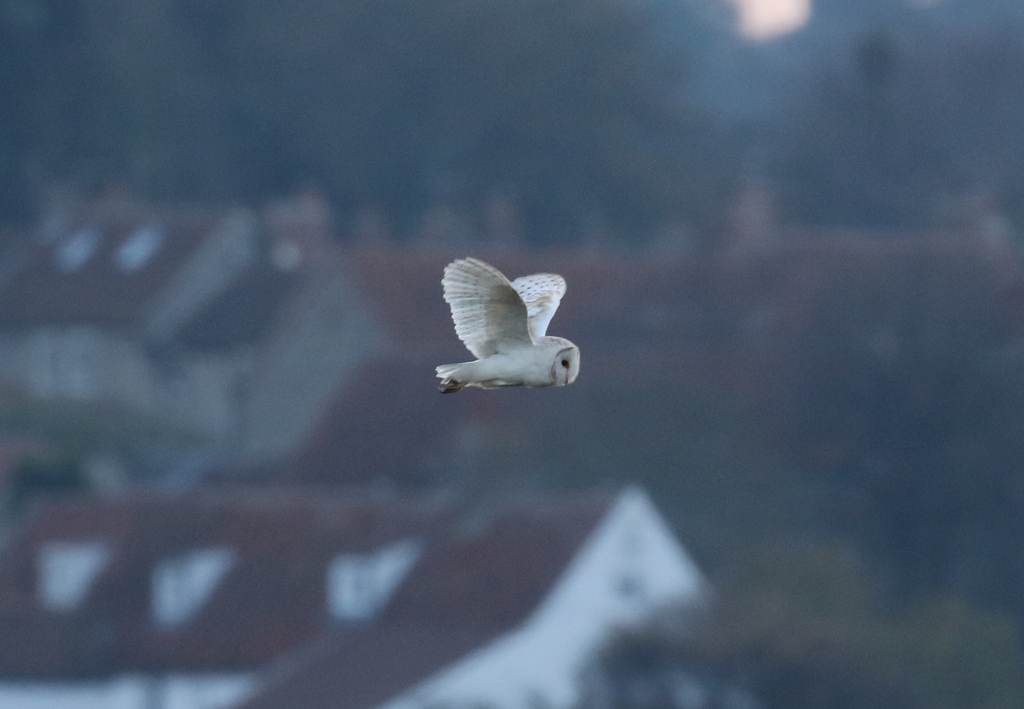
The afternoon was getting on now and the Marsh Harriers were starting to gather ahead of roosting. One harrier was already perched on a bush out in the reeds, a rather dark one with a pale head. A darkish male flew in over the Freshes from the harbour to join it, as another greyer male flew past behind us, still working the sides of the Glaven channel, before turning back and gliding in too.
We couldn’t find any Twite feeding anywhere along the seawall, so we decided we would head back. Just as we were walking past the corner where they often come down to drink, the Twite suddenly flew in. Perfect timing! We counted seventeen of them, as they dropped in around the edge of their favourite puddle. It was just a quick drink though. We barely had time to get them in the scope before they were off again, flying out across the harbour.
A small flock of Golden Plover whirled round over the harbour and dropped down onto the saltmarsh, where they instantly disappeared into the vegetation, beautifully camouflaged. The halfway back to the village, we spotted the Barn Owl again, on a post visible through a gap in the reeds. It had just caught a vole and spent a minute or two playing around with it before swallowing it whole. It perched for a while digesting, before it was flushed by a dogwalker and flew off back across the grazing marshes.
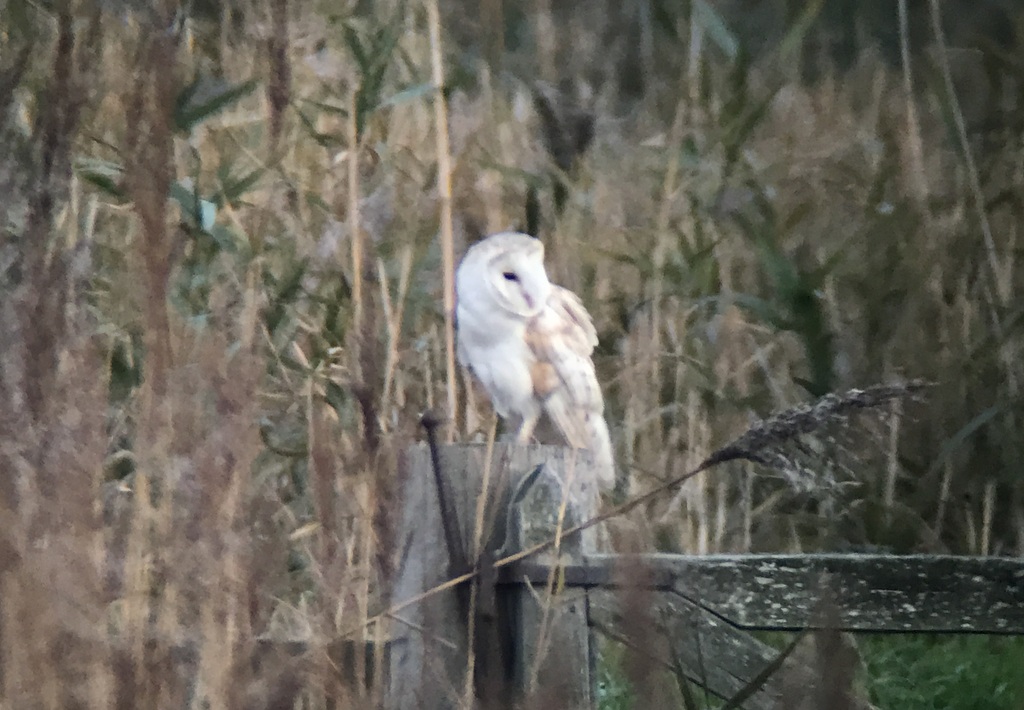
It was a lovely late afternoon out at Blakeney, but as the sun slipped down in the sky behind the horizon, the temperature started to drop, so we decided to call it a day.
















